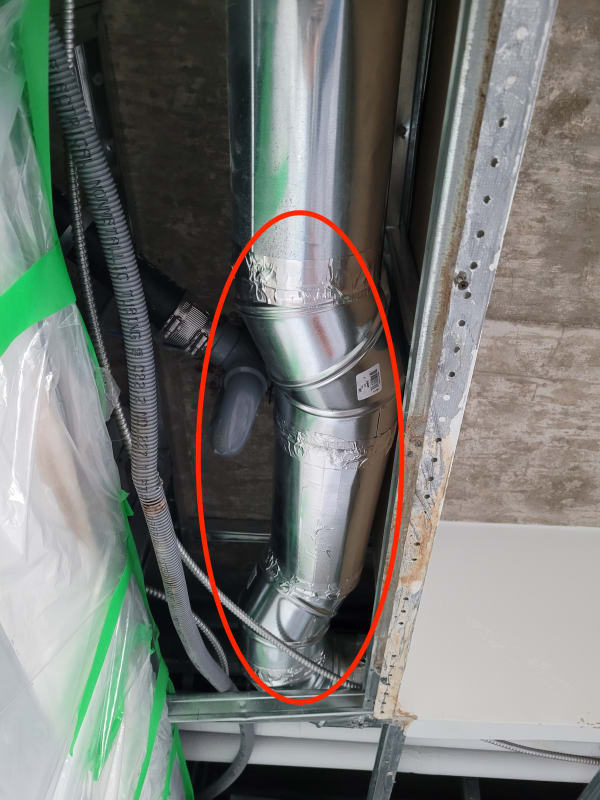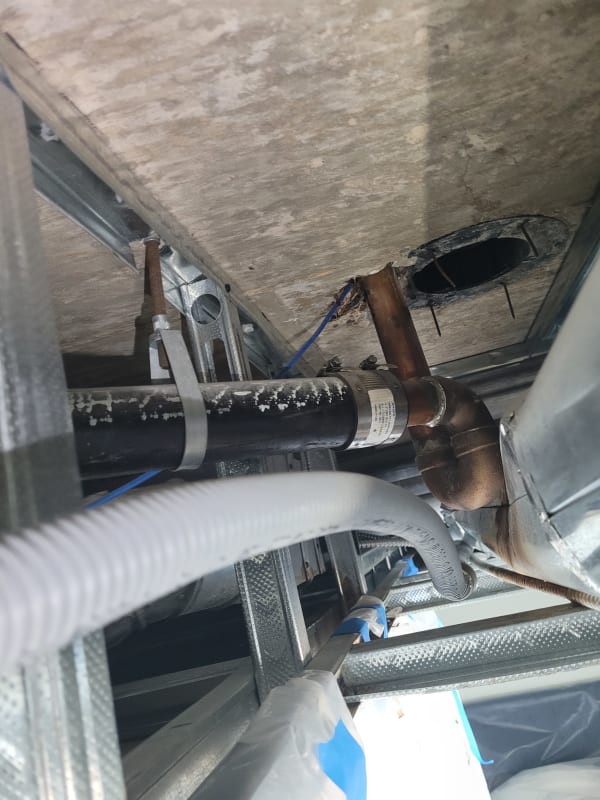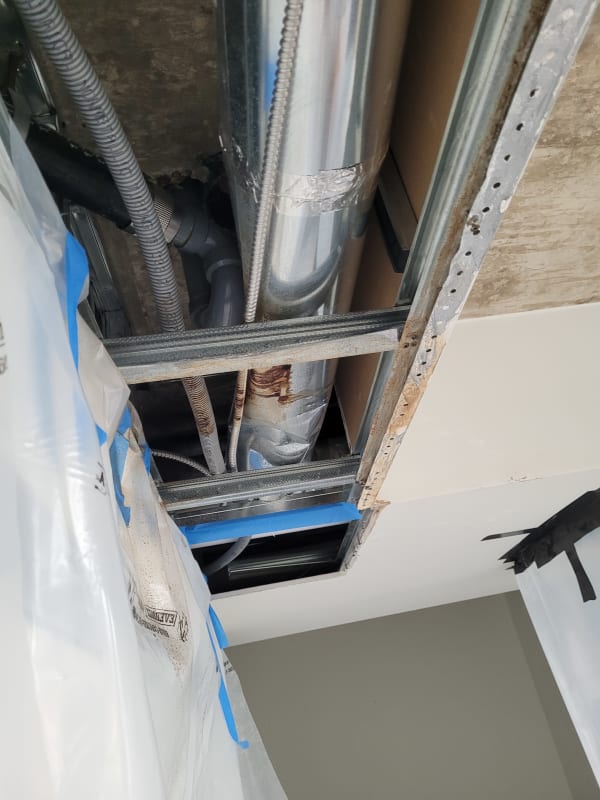-
1
- #1
Hello,
A contractor replaced a straight supply air duct in a condo with the air duct circled in red with multiple extra bends in the air duct. Can someone confirm that this change in configuration will also change the air flow negatively and what could be consequence of changing it to this configuration? The supply air duct is attached to a Fan coil.
Thanks.

A contractor replaced a straight supply air duct in a condo with the air duct circled in red with multiple extra bends in the air duct. Can someone confirm that this change in configuration will also change the air flow negatively and what could be consequence of changing it to this configuration? The supply air duct is attached to a Fan coil.
Thanks.



